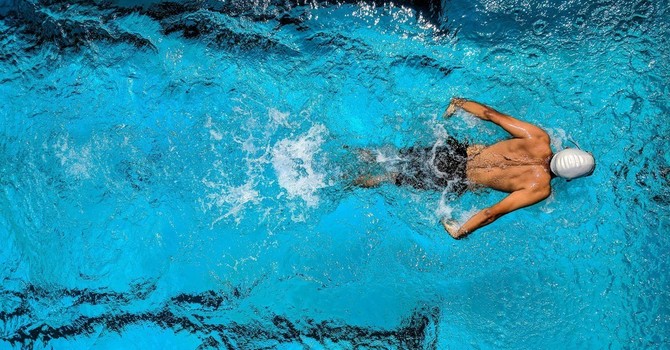
Understanding and Managing Neck Pain and Headaches in Winnipeg Part 2
In part one of this article I talked about Upper Crossed Syndrome, Headaches and Neck Sprains and Strains as sources of head and neck pain. This installment will discuss injuries to the disc, pinched nerves(radiculopathy) and TMJ (jaw) pain.
Disc Pain
Discogenic Pain is a condition that results from damage and associated irritation of the fibers of intervertebral discs. Intervertebral discs are cushions found between each vertebra of the spine that work as shock absorbers to protect the vertebrae by helping dissipate the forces applied to the spine and to help facilitate movement. The cervical discs are found between the vertebrae of the neck. Intervertebral discs consist of an outer annulus fibrous, made up of tough, fibrous connective tissue, which surrounds a gel-like center called the nucleus populous. Essentially the disc is structured like a jelly donut with the outside of the donut being the annulus and the inside being the nucleus.

Cervical disc pain can arise from a variety of causes, whether by injury or a degenerative condition.
Potential causes of Cervical Discogenic Pain Syndrome
• Direct trauma - falls, motor vehicle accident, whiplash, sports injury
• Overuse, fatigue, repetitive microtrauma - over hours, days, months of the same position.
• Postural - can be either an intrinsic postural problem (e.g. loss of cervical curvature) or an extrinsic postural problem (e.g. prolonged stressful position, protruded head posture).
• Sudden unguarded movement.
• Degenerative disc disease (wear and tear).
Symptoms of Cervical Discogenic Pain Syndrome
The symptoms will vary depending on whether the condition is caused by a herniated disc or by a degenerative disc. With a herniated disc, some people will not experience pain in the neck but will have radiating pain, tingling, and numbness down the arm or around the shoulder blade due to pressure put on the nerve root. Discogenic pain due to an injury can result in immediate pain or pain shortly after the injury. Headaches (usually cervicogenic) can also result from cervical disc pain.
Treatment of Cervical Discogenic Pain Syndrome
Treatment for cervical discogenic pain will depend on the clinical presentation. Conservative treatment can successfully manage many cervical disc herniations. Initial treatment will focus on controlling pain and inflammation.
Once pain and inflammation have decreased, early rehabilitation will help prevent chronic pain and disability. This will consist of adjustments to the vertebrae to restore movement to your spine, soft tissue therapy to relax overactive muscles, activity as tolerated to start to build up strength in your neck, and pain-free range of motion exercises.
Late rehabilitation will be administered as the condition improves and will include stabilization exercises, patient education, and postural training. Education in proper training, biomechanics, and a home exercise program will help strengthen the spine and decreases the likelihood of future injury. If you fail to respond to conservative treatment, or in cases of severe pain, diagnostic imaging (x-ray, MRI) will be warranted, and an orthopedic consult may be necessary.
Cervical Radiculopathy (pinched nerve)
Cervical Radiculopathy is a irritation of the cervical nerve roots resulting in various neurologic findings. The cervical spine consists of seven cervical vertebrae and eight cervical nerve roots. Cervical radiculopathy can result in pain, numbness, tingling, or weakness, and though the problem occurs at the nerve root of the cervical spine, these symptoms will often radiate to parts of the body controlled by that nerve. The seventh (C7) and sixth (C6) cervical nerve roots are most commonly affected.
In younger patients, cervical radiculopathy is usually the result of a disc herniation or an acute injury, causing foraminal impingement of the exiting nerve. In the older population, cervical radiculopathy is usually due to foraminal narrowing from osteophyte formation, decreased disc height, or degenerative changes. In elderly patients with osteophyte formation, repetitive neck movements may result in a more insidious injury. Cervical radiculopathy due to sports injuries can result from several mechanisms. Typical these injuries occur from forced extension, lateral bending, or a rotation mechanism, which closes the foramen and results in the exiting nerve root being injured.

Risk Factors for Cervical Radiculopathy
• Heavy manual labour requiring lifting more than 25 pounds (especially repetitive activity)
• Driving or operating vibrating equipment
• Smoking
• Collision sports (e.g. football, hockey)
• Prior injuries, degenerative disc disease/osteoarthritis
History and Symptoms of Cervical Radiculopathy
The condition may follow a neck injury or be of insidious onset, and there may be a history of multiple episodes of previous neck pain or arthritis of the cervical spine. Sometimes it starts out as a disc injury without any radiating pain and then evolves to include arm and hand symptoms.
The pain may range from deep aching to severe burning neck pain. Usually, the pain will be referred to as the shoulder blade, which might be described as shoulder pain. If the radiculopathy progresses, radicular arm pain (“sharp, shooting, electrical”) or sensory changes (“numbness, tingling, loss of sensation”) may develop down the arm and into the hand. Arm symptoms will depend on which nerve root is involved. Occasionally, a motor weakness may develop pain in the shoulder or arm. Certain neck positions that cause increased foraminal narrowing may increase the pain. The symptoms may be relieved by lifting the arm over the head which decreases the tension at the nerve root.
Treatment of Cervical Radiculopathy
Initial treatment will focus on reducing pain and inflammation and prevention of further neurological loss. The focus will also be on centralizing (reducing) any radicular symptoms by decreasing nerve root compression and pressure within the herniated discs. This might consist of manual traction and pain-free active non-resisted ranges of motion while avoiding positions that increase neck and arm symptoms. A cervical pillow at night can be helpful in maintaining the neck in a neutral position and limiting head positions that cause foraminal narrowing. Electrotherapy modalities or acupuncture may be used to help reduce any associated muscle pain and muscle spasms. Once pain and inflammation have decreased, therapy will progress to restore full range of motion and mobility of the neck and shoulder. This will include muscle stretching, strengthening and proprioceptive training, and corrective exercises as tolerated. Cervical adjustments and soft tissue therapy are also important aspects of a complete treatment strategy. If you fail to respond to conservative treatment, or in cases of severe neurological loss, a secondary consultation with a neurologist or neurosurgeon will be recommended.
TMJ Dysfunction (Jaw Pain)
“I’ve got TMJ” It’s a pretty common statement, which is a bit of a misnomer. Everyone has TMJ. Why? The TMJ is the tempo-mandibular joint(TMJ). We all have two, one on each side of our jaw. What people are probably trying to say is that they have TMJ disorder, aka pain and dysfunction of the jaw while opening or closing your mouth.

What happens is the mandible (your jaw) connects to the rest of your head at the temporal bone. It’s a hinge joint that pivots through a cartilage disc called a meniscus in between the two bones of this joint. Unfortunately, it’s a commonplace for the TMJ to become subluxated or in other words, a little bit dislodged. After that, you can get overuse and degeneration of that joint. One way to tell if you have this disorder is to open your mouth and measure, can you open your mouth the height of 3 fingers for your hand? If not, you might have TMJ disorder.
The main physical causes of this condition are:
• trauma
• overuse from a commonly chewing on one side of your mouth
• keeping the mouth open for extended periods of time (like at the dentist)
• improper bite
• grinding
From a physical standpoint, the best way to prevent TMJ disorder is to wear proper mouthpieces while playing sports, wearing mouth guards while sleeping, making sure to chew food evenly on both sides of your mouth, cutting tough meats and other foods into small pieces and minimizing gum chewing.
Treatments involve control of pain, swelling and inflammation. Mobilization, and adjustments of the TMJ to help it move better, soft tissue techniques to help the jaw muscles relax and function better, and in some cases laser or acupuncture to help speed healing and reduce pain.
We understand that you have a choice of who you trust with the management of your neck pain and headaches, and sincerely appreciate your confidence in Sun Chiropractic.



